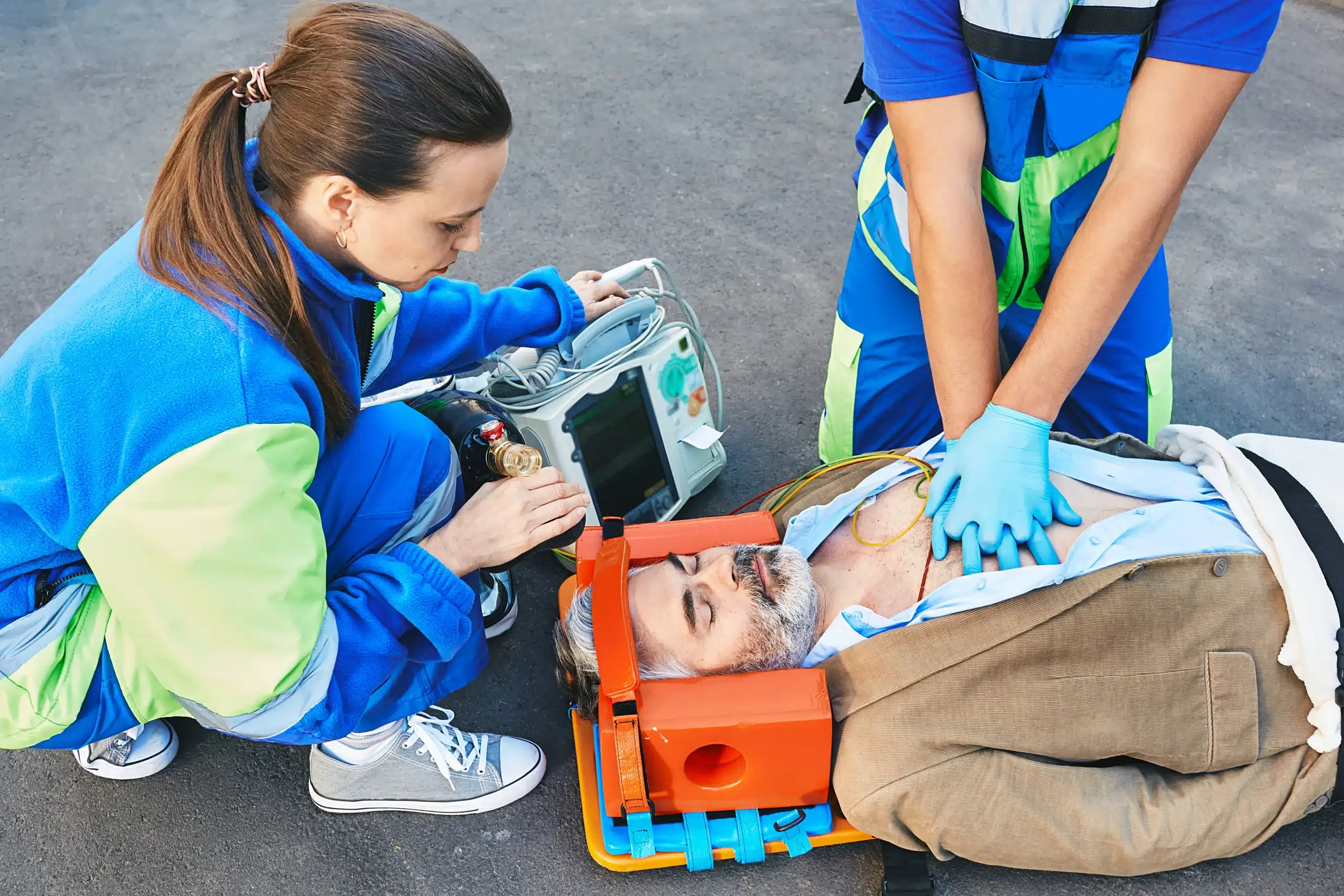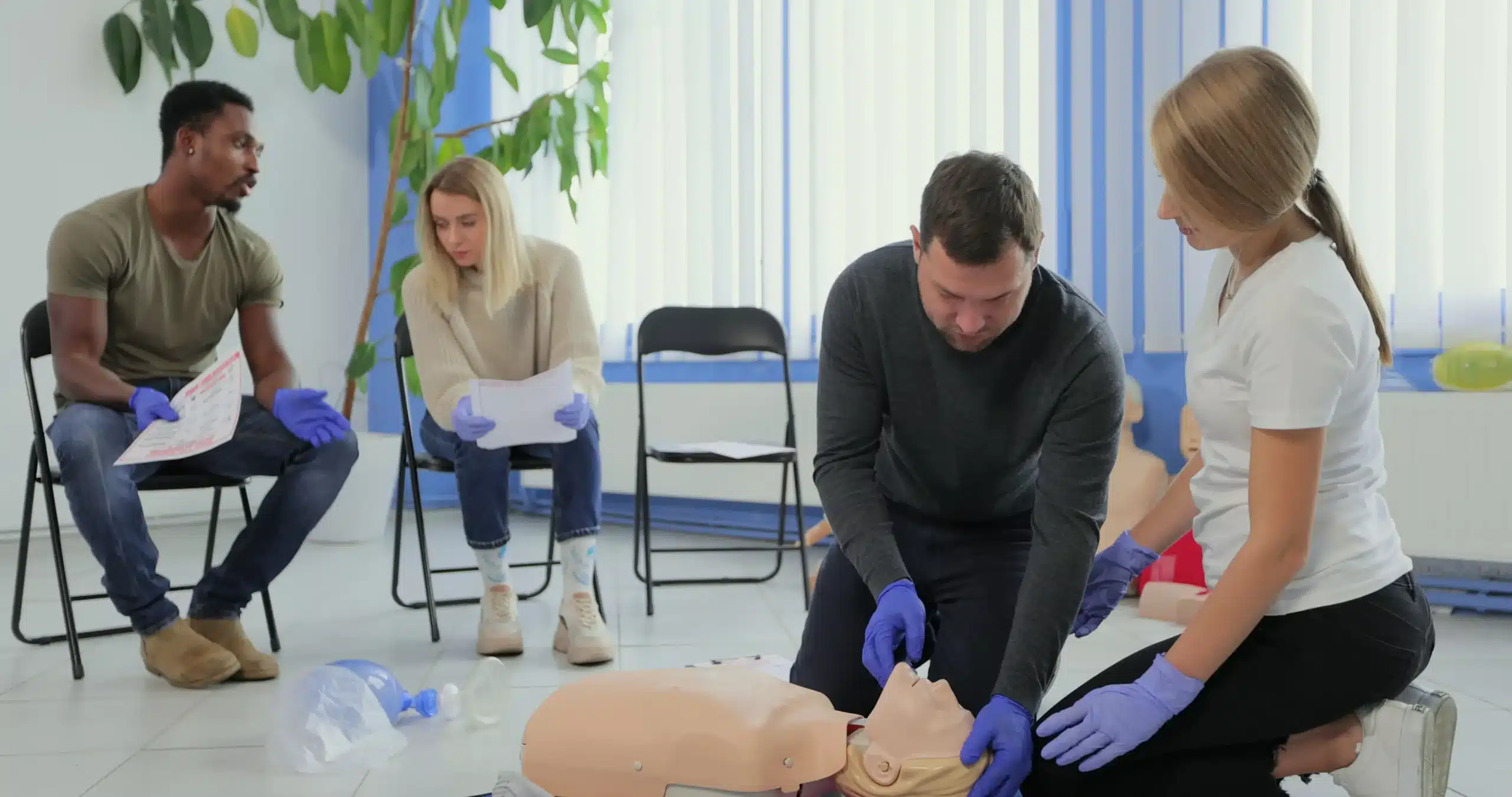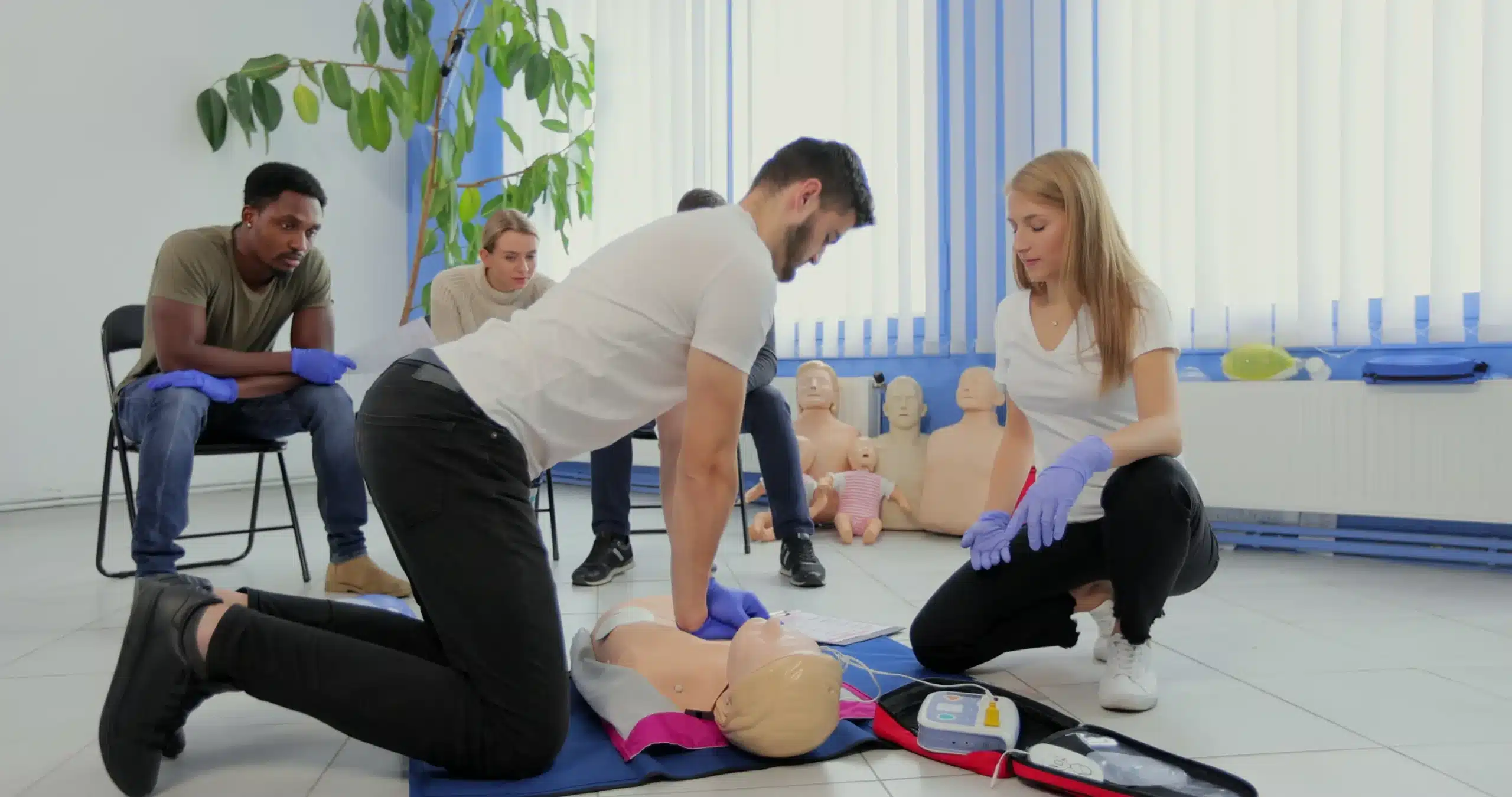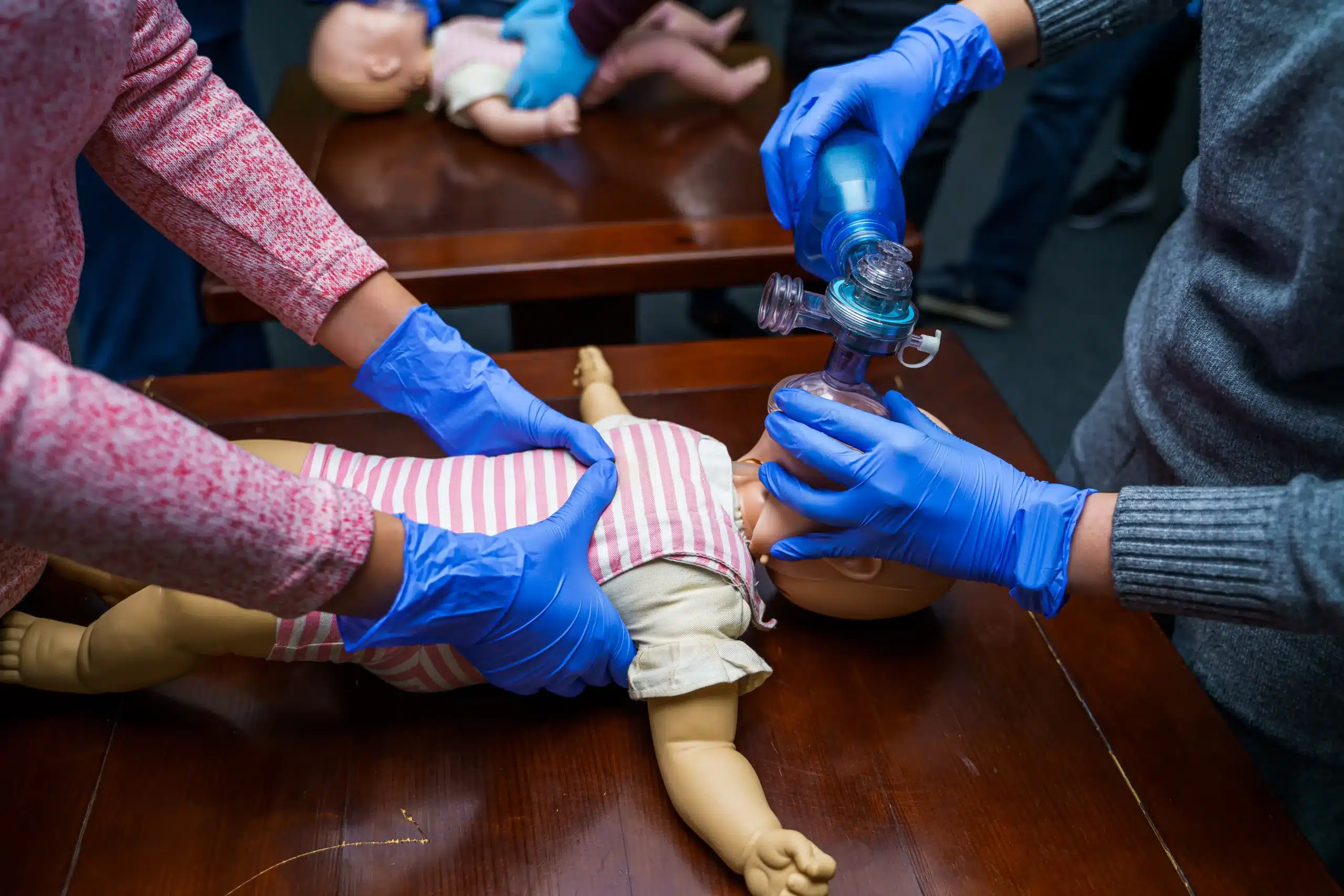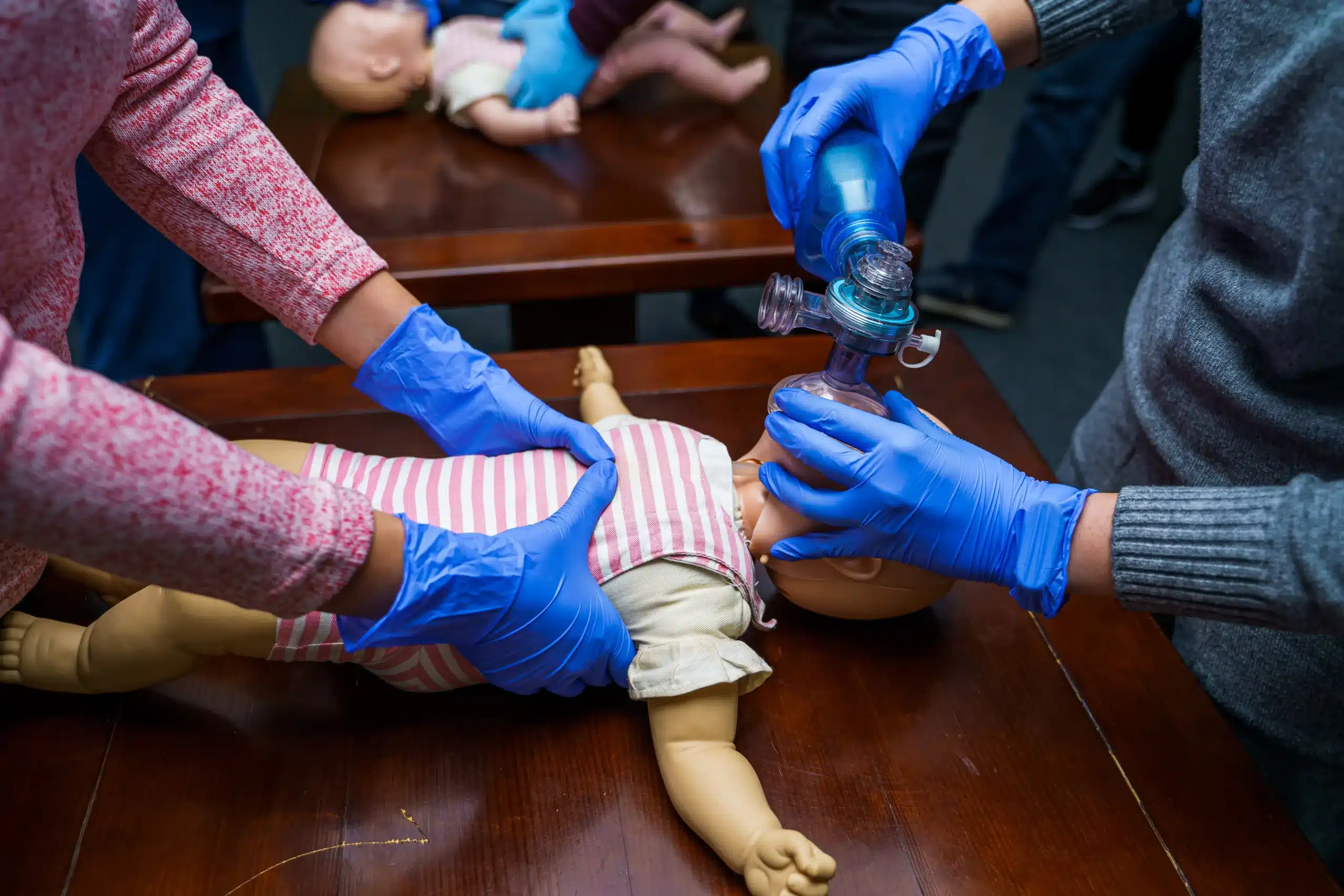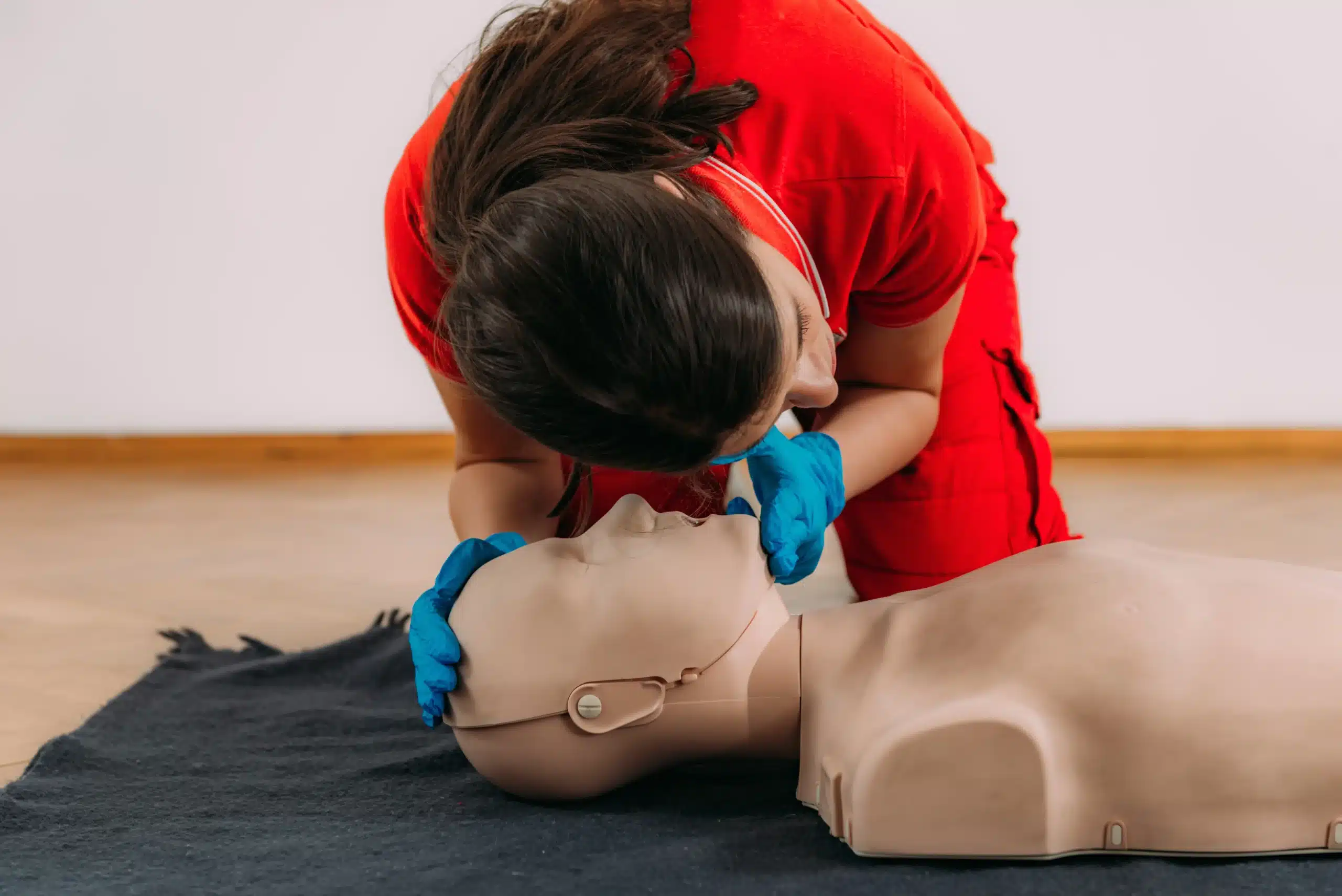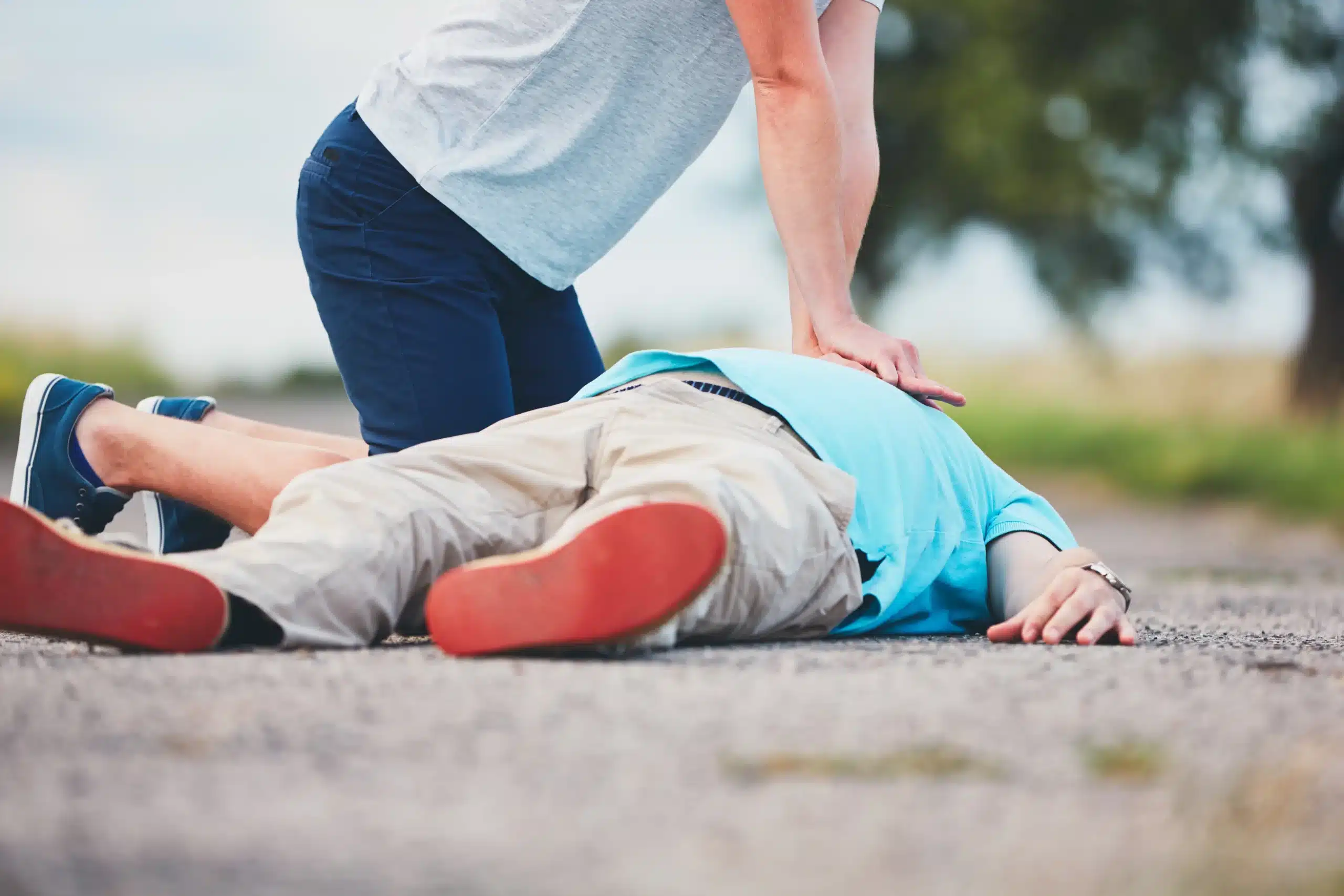Emergencies happen, and knowing how to respond effectively can make all the difference. CPR training in Turlock provides the skills and confidence to act quickly and decisively in critical situations. This guide breaks down the various CPR certification courses available in Turlock, including BLS, ACLS, PALS, and First Aid, helping you choose the right training for your personal and professional goals. We’ll also explore local training providers, discuss costs and scheduling options, and answer frequently asked questions about CPR training in Turlock, ensuring you have all the information you need to get started.
Key Takeaways
- CPR training equips you with essential skills: Learn life-saving techniques, from basic CPR to advanced certifications, and gain the confidence to respond effectively in medical emergencies.
- Find the right CPR course in Turlock: Explore various training formats, including in-person classes, blended learning, and mobile training, to fit your schedule and learning preferences. Local providers offer a range of options to meet diverse needs.
- Invest in your skills and choose a course strategically: Consider your goals, budget, and preferred learning environment when selecting a CPR training program. Research providers, compare costs, and prioritize flexible scheduling to maximize your learning experience.
What is CPR Training?
CPR (Cardiopulmonary Resuscitation) training teaches you how to respond effectively to medical emergencies. It involves chest compressions and rescue breaths that maintain blood flow and oxygen to the brain and other vital organs until professional help arrives. Learning CPR can dramatically increase the chances of survival for someone experiencing cardiac arrest, choking, or drowning. CPR is a critical life-saving skill that can make a real difference in emergencies. Turlock CPR Classes explains the importance of CPR and how it can be the difference between life and death.
Good CPR training covers essential techniques and guidelines, ensuring you’re prepared to act quickly and confidently. Merced CPR Classes offers American Heart Association certification courses covering these important guidelines. These courses blend theoretical knowledge with hands-on practice, allowing you to become comfortable with the techniques in a safe environment. Most CPR courses take between one and two days to complete, depending on the provider and specific course content, as outlined by Turlock CPR Classes. Whether you’re a healthcare professional, childcare provider, or simply want to be prepared for anything, CPR training is a valuable skill for everyone.
CPR Courses in Turlock
Turlock offers a variety of CPR courses to meet the needs of healthcare providers, workplace responders, and community members. Whether you’re a medical professional seeking recertification or a concerned citizen wanting to learn lifesaving skills, you can find the right training in Turlock. Here’s a breakdown of common CPR certifications available:
BLS
Basic Life Support (BLS) certification courses are crucial for healthcare professionals and anyone responding to emergencies. These courses cover core CPR skills for adults, children, and infants, along with training on AED use and relief of choking. BLS classes emphasize teamwork and high-quality CPR to improve patient outcomes. As noted by Bay Area CPR, these courses are a vital part of any community’s health and safety infrastructure.
ACLS
Advanced Cardiovascular Life Support (ACLS) training builds upon the foundation of BLS. ACLS certification is designed for healthcare providers who manage cardiopulmonary arrest and other cardiovascular emergencies. The curriculum covers topics like airway management, rhythm recognition, and effective team dynamics. Local providers like Safety Training Seminars offer high-quality ACLS courses in Turlock.
PALS
Pediatric Advanced Life Support (PALS) courses focus on the specialized needs of infants and children facing respiratory or cardiovascular emergencies. PALS certification equips healthcare providers with the knowledge and skills to assess, intervene, and stabilize young patients in critical situations. Merced CPR Classes offers PALS training in Turlock.
First Aid/CPR Combo
Combining CPR and First Aid training provides comprehensive skills for responding to various emergencies. These courses teach how to manage injuries, control bleeding, and provide initial care for common medical issues. While some programs, like those offered by the City of Turlock Fire Department, may focus solely on CPR and AED use for adults and children, others incorporate more extensive first aid instruction. The duration of these combined courses typically ranges from one to two days, depending on the specific curriculum.
Where to Find CPR Training in Turlock
Finding the right CPR training can feel overwhelming, but several excellent resources are available in Turlock and the surrounding areas. Here’s a rundown of local providers to help you find the best fit:
Merced CPR Classes
Merced CPR Classes offers a range of American Heart Association (AHA) certifications, including BLS, ACLS, PALS, and First Aid. Conveniently located near Turlock, they are known for their low price guarantee and offer discounts for group classes. Visit their website for more information on course preparation.
Turlock Fire Department
The Turlock Fire Department provides CPR training with a focus on adult, child, and infant CPR, as well as AED use. These courses are offered in partnership with the American Safety Health Institute and are held quarterly at the Public Safety Facility. Contact the Turlock Fire Department for their class schedule and registration details.
First Lady Permanente
First Lady Permanente offers various medical programs, including AHA certifications like BLS, ACLS, and PALS. These courses cater to current healthcare professionals seeking to maintain or enhance their credentials. Visit their website to explore their program offerings and schedules.
Safety Training Seminars
Safety Training Seminars is a woman-owned AHA Training Center offering BLS, ACLS, PALS, CPR, and First Aid courses in Turlock. They emphasize high-quality training and offer courses seven days a week to accommodate busy schedules. Visit their website for details on course schedules and registration.
Professional CPR
Professional CPR provides First Aid, CPR, and BLS classes to individuals and businesses in Turlock. They prioritize equipping students with the confidence and skills to handle real-life emergencies. Check out their website for more information on courses and availability.
Bay Area CPR
While primarily serving Merced, Bay Area CPR offers AHA-certified CPR, BLS, ACLS, PALS, and First Aid classes. This could be a good option for those closer to Merced or willing to travel a short distance. Visit their website to view their course offerings and schedule.
CPR Training Costs
CPR training is an investment in lifesaving skills, and understanding the associated costs can help you plan for your training. Several factors influence the final price, including the type of course, location, and any available discounts. Let’s break down the typical costs associated with CPR training in and around Turlock.
Average Course Costs
The cost of CPR certification varies depending on the level of training you need. Basic CPR and First Aid combination courses typically range from $75 to $140. More advanced courses, such as BLS for Healthcare Providers, ACLS, or PALS, generally cost more due to the specialized nature of the training and longer class times. Remember, this investment equips you with skills that can make a real difference.
Group Discounts
If you’re training a team or group, look for group discounts to lower the overall cost. Many CPR training providers offer special pricing for groups. This can be a smart solution for businesses, community organizations, or even a group of friends learning together. Contact providers directly to discuss your group’s needs and explore available discounts.
Low Price Guarantees
Finding affordable, high-quality training is a priority. Some CPR training providers understand this and offer a low-price guarantee. This guarantee helps ensure you receive excellent training at a competitive price. When comparing training options, check for low-price guarantees or contact providers to discuss your budget.
CPR Instructor Qualifications
Choosing the right CPR instructor is just as important as choosing the right class. Look for instructors who meet these qualifications:
AHA Certification
The American Heart Association (AHA) sets the standard for CPR training. Make sure your instructor holds current AHA certification. This ensures they’ve received the most up-to-date training and adhere to the latest guidelines for high-quality CPR and emergency cardiovascular care. AHA-certified instructors provide the knowledge and skills you need to respond confidently in a real emergency.
Instructor Experience
Beyond certification, consider the instructor’s experience. An instructor with a strong background in emergency response or healthcare can offer valuable real-world insights. Look for classes taught by experienced professionals who are passionate about sharing their expertise. Their experience enriches the learning environment and better prepares you to handle emergencies. For example, CPR classes in the Turlock, Modesto, and Merced areas are often led by instructors with extensive experience.
Practice-While-Watching
Some CPR training providers use a technique called Practice-While-Watching (PWW). This research-proven method lets instructors observe students as they practice CPR skills, offering immediate feedback and personalized guidance. This interactive approach reinforces what you’re learning and helps you build confidence, ensuring you’re fully prepared to perform CPR effectively when it matters most.
CPR Training Formats
Finding the right CPR training format is key to successfully completing your certification. Thankfully, there are several options available in Turlock, from traditional classroom settings to online courses and even mobile training brought right to your door. Let’s explore the different formats so you can choose the best fit for your schedule and learning style.
In-Person Training
In-person CPR training offers a hands-on learning experience with direct interaction with a certified instructor. These classes typically cover adult, child, and infant CPR, as well as AED use. This format allows for immediate feedback, practice sessions, and asking questions in real-time. For example, the Turlock Fire Department offers in-person CPR classes. This is a great option for those who thrive in a traditional classroom environment and prefer face-to-face instruction.
Online & Blended Learning
For those seeking a more flexible approach, online and blended learning CPR courses are gaining popularity. Blended learning often combines online coursework with in-person skills practice and testing. The American Heart Association’s RQI program is a popular choice for healthcare professionals seeking BLS, ACLS, and PALS certifications. This format allows you to complete the theoretical portion of the course at your own pace, followed by a hands-on skills session to solidify your knowledge. Turlock CPR Classes also offers blended learning CPR courses.
Mobile Training
Busy schedules shouldn’t be a barrier to essential training. Mobile CPR training brings the classroom to you, whether it’s your home, office, or community center. Providers like Professional CPR offer this convenient service, allowing groups to train together in a familiar environment. This format eliminates travel time and offers a personalized experience.
Course Length & Time Commitment
CPR and First Aid certification courses typically range from one to two days, depending on the specific course and provider. Turlock CPR Classes offers various course lengths to accommodate different schedules. Before registering, confirm the course duration and time commitment to ensure it aligns with your availability. This will help you plan accordingly and complete the training successfully.
Benefits of CPR Certification
Getting CPR certified isn’t just about checking a box; it’s about equipping yourself with skills that can make a real difference. Whether you’re a healthcare professional, a childcare provider, or simply someone who wants to be prepared for anything, CPR certification offers a range of personal and professional advantages.
Improve Personal Safety
CPR and first-aid training empowers you to handle emergencies with confidence. Imagine you’re at a family gathering when someone starts choking. Instead of panicking, you’ll know how to perform the Heimlich maneuver. Or perhaps you witness a car accident and can help stabilize a victim until paramedics arrive. These life-saving skills extend beyond major emergencies, too. Knowing how to treat minor cuts, burns, or sprains can prevent infections and further complications at home or on the go. It’s about being prepared for the unexpected and having the skills to protect yourself and your loved ones.
Advance Your Career
In many healthcare professions, CPR certification is a requirement. It’s often a prerequisite for jobs like nursing, physical therapy, and becoming a physician. Even if you’re already working in healthcare, maintaining your CPR certification shows your commitment to staying up-to-date with the latest guidelines and best practices, which can open doors to new opportunities and career advancement. CPR certification can also be a valuable asset in other fields, such as education, childcare, and fitness. It signals to employers that you’re prepared to handle emergencies and prioritize safety.
Prepare Your Community
When you become CPR certified, you’re not just helping yourself—you’re contributing to a safer community. The more people in your community trained in CPR, the greater the chances of someone receiving immediate help during a medical crisis. This can significantly improve survival rates, especially in cases of cardiac arrest. CPR classes in Merced and surrounding areas are building a network of prepared individuals ready to respond to emergencies, creating a more resilient and supportive community.
CPR Training FAQs
This section answers some of the most common questions about CPR training. Hopefully, it helps you feel prepared and informed about your upcoming class!
Certification Renewal
CPR certifications, like those from the American Red Cross, are typically valid for two years. It’s essential to renew your certification before it expires to maintain your skills and be ready to respond to emergencies. Check with your certifying organization for specific renewal requirements. Staying current with the latest guidelines and techniques could make all the difference in a critical situation.
Class Size & Registration
Class sizes vary depending on the training provider. Some organizations, like the Turlock Fire Department, limit classes to 12 students. This smaller setting allows for more individualized instruction and hands-on practice. Because of limited class sizes, register early to secure your spot.
What to Expect in Class
Most CPR classes cover adult, child, and infant CPR and AED (Automated External Defibrillator) training. Expect a combination of instruction, demonstrations, and hands-on practice. Many providers, including Turlock CPR Classes, issue an official American Heart Association certification card upon successful completion, valid for two years. Be prepared for a dynamic and engaging learning experience.
Choose the Right CPR Training
Finding the right CPR training goes beyond simply picking a class. It’s about finding the best fit for your individual needs, schedule, and budget. This section breaks down key factors to consider when making your decision.
Factors to Consider
Think about your goals for CPR training. Are you pursuing personal growth, career advancement, or fulfilling specific job requirements? Understanding your objectives will guide you toward the right course. For example, healthcare providers often need AHA certifications like BLS or ACLS. If you’re a parent or caregiver, a basic CPR and First Aid course might be perfect.
Cost is another important consideration. Compare pricing between different providers and explore options like group discounts to make training more affordable. Also, factor in location and schedule. Choose a training center that’s convenient and offers classes that fit your availability. Merced CPR Classes offers a range of courses with flexible scheduling.
Compare Local Options
Research different CPR training providers in your area. Look for established providers with experienced instructors and positive reviews. For instance, Safety Training Seminars is a woman-owned AHA Training Center specializing in high-quality courses. They offer various certifications, including BLS, ACLS, PALS, CPR, and First Aid. First Lady Permanente is another option, providing various medical programs, including CPR training. Comparing providers helps you find the best match for your needs.
Flexible Scheduling
Life gets busy, so finding a CPR class that accommodates your schedule is crucial. Seek out providers that offer classes on various days and times, including evenings and weekends. Turlock CPR Classes offers courses seven days a week, making it easier to find a suitable time. Their easy registration process also allows for quick sign-up. If you’re training a group, ask about mobile training, where the instructor comes to you. This can be a convenient and cost-effective choice for workplaces or community groups.
Prepare for CPR Class
Getting ready for your CPR class is straightforward, but a few simple steps will ensure a positive learning experience. Understanding the required materials, reviewing some pre-course study tips, and knowing what to wear will help you feel confident and prepared on the day of your training.
Required Materials
Most CPR classes provide all the essentials, including CPR mannequins and any necessary equipment. Your course fee typically covers these supplies, along with your certification card upon successful completion. For example, a combined CPR and First Aid certification course often includes all materials and the certification card. Double-check with your chosen provider to confirm exactly what’s included and if there’s anything specific you need to bring.
Pre-Course Study Tips
While pre-course studying isn’t usually required for CPR classes, familiarizing yourself with the basics can be helpful. Reviewing CPR techniques and guidelines beforehand can deepen your understanding and make the hands-on training even more effective. Resources like the American Heart Association’s Resuscitation Quality Improvement (RQI) program offer valuable information, especially for healthcare providers maintaining their certifications.
Dress Code & Physical Requirements
CPR training involves hands-on practice, including performing chest compressions on a mannequin. Wear comfortable clothing that allows for a full range of motion, such as athletic wear or loose-fitting clothes. Avoid restrictive clothing that might hinder your movement during the practical exercises. You’ll want to be able to kneel, bend, and move freely. Learning CPR is a physical activity, so comfortable attire is key. Since some CPR courses can be held at your preferred location, dressing comfortably is even more convenient.
Related Articles
- Why CPR is a Lifesaving Skill in Healthcare
- CPR Certification in Turlock: Your Guide – Merced CPR Classes
- Group CPR Discount Classes in Merced, CA – Discounts Available
- CPR Certification in Merced: Your Complete Guide – Merced CPR Classes
- Best Online CPR Classes in Atwater, CA – Merced CPR Classes
Frequently Asked Questions
How much does CPR training cost?
CPR training costs vary based on the course type and provider. Basic CPR and First Aid courses typically range from $75 to $140. More advanced certifications like BLS, ACLS, and PALS usually cost more. Many providers offer group discounts, so inquire about those if you’re training with others. Also, look for providers who offer a low-price guarantee to ensure you’re getting a competitive rate.
What should I expect during a CPR class?
Expect a blend of instruction, demonstrations, and hands-on practice. You’ll learn essential techniques like chest compressions, rescue breaths, and how to use an AED. Most classes cover adult, child, and infant CPR. You’ll practice on mannequins and receive feedback from your instructor. Dress comfortably in clothing that allows for free movement.
How long is a CPR certification valid, and how do I renew it?
Most CPR certifications are valid for two years. Check with your certifying organization (like the American Heart Association or American Red Cross) for their specific renewal process. Generally, you’ll need to retake the course before your certification expires to stay current with the latest guidelines.
What are the different types of CPR training available?
Several CPR training formats cater to different learning styles and schedules. In-person classes offer a traditional classroom setting with direct instructor interaction. Online and blended learning options combine online coursework with in-person skills sessions. Mobile training brings the instructor and equipment to your location for group training. Choose the format that best suits your needs and preferences.
How do I choose the right CPR class and instructor?
Consider your goals for CPR training. Are you looking for personal enrichment, career advancement, or to meet specific job requirements? This will help you determine the right course level. Look for certified instructors, preferably with real-world experience in emergency response or healthcare. Check reviews and compare pricing and schedules from different providers in your area to find the best fit.
